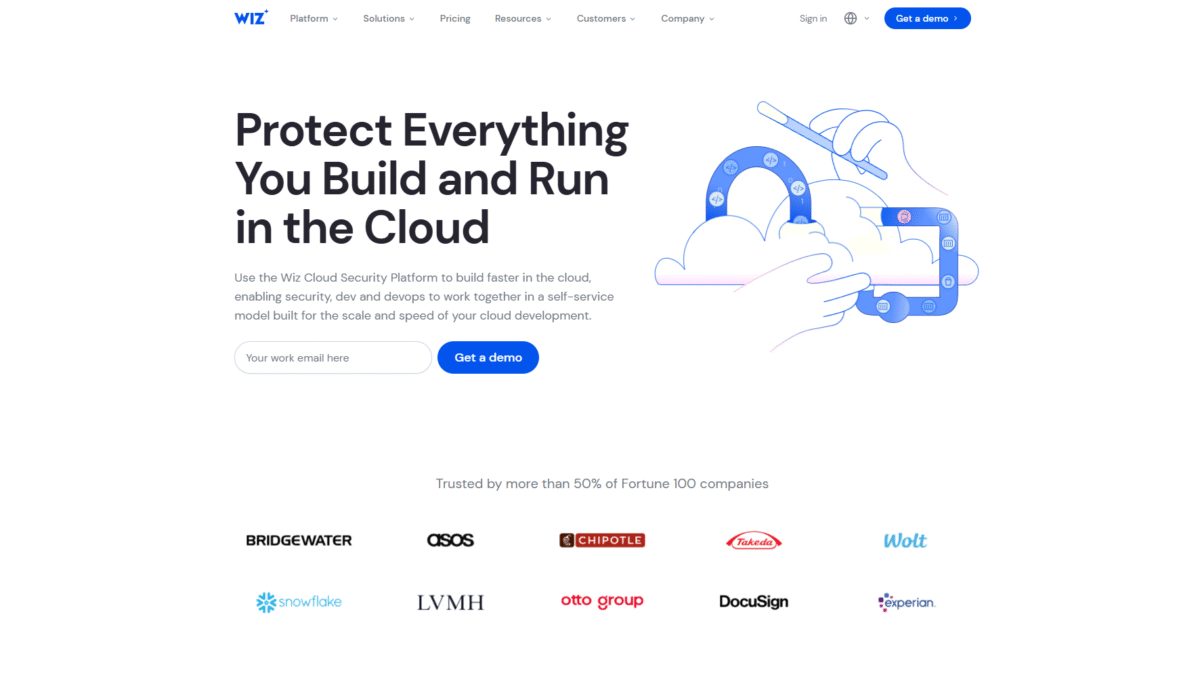
Essential Cloud Security Best Practices for DevOps Teams
Searching for the ultimate guide to cloud security best practices? You’ve landed in the right spot. With Wiz’s powerful platform at your side, your DevOps teams can build, deploy, and scale in the cloud without compromising on security. From automated risk detection to seamless integration in your CI/CD pipelines, Get Started with Wiz Today and turn best practices into everyday realities.
As cloud environments grow more complex, DevOps teams struggle to maintain speed while keeping risk in check. This guide lays out proven cloud security best practices to help you tighten controls, foster collaboration between development and security, and stay ahead of emerging threats.
1. Shift Left: Embed Security Early
Waiting until production to spot vulnerabilities is a recipe for late-stage fire drills. Adopt a “shift left” approach:
- Integrate security scans into code review workflows.
- Automate static and dynamic analysis within your CI/CD system.
- Run infrastructure-as-code (IaC) checks on every pull request.
Wiz Code delivers unified visibility across repositories and pipelines, ensuring every code change is assessed against security benchmarks before merge time.
2. Adopt a Cloud Operating Model
Break down silos between engineering and security by:
- Defining shared goals and metrics for deployment speed and risk reduction.
- Providing self-service security tools so teams can address issues autonomously.
- Conducting regular cross-functional reviews of exposure and remediation efforts.
With Wiz Cloud, you get agentless visibility into your entire cloud footprint—no more blind spots or slow rollouts.
3. Prioritize Risk with Context
Not all vulnerabilities are equal. Focus on those that pose the greatest business impact by:
- Mapping critical assets and their dependencies.
- Scoring risks based on exploitability and asset importance.
- Automating prioritization so your team tackles high-impact issues first.
The Wiz Security Graph contextualizes exposures across accounts, workloads, and services—so you know exactly where to take action.
4. Enforce Runtime Protection
Static checks alone aren’t enough. Implement real-time defenses:
- Monitor for anomalous behavior and known attack patterns.
- Apply host- and network-level controls to contain or block threats.
- Trigger automated incident responses via integrations with your preferred SIEM or ticketing system.
Wiz Defend provides continuous threat detection and response, ensuring your workloads are monitored 24/7 without performance impact.
5. Automate Compliance and Governance
Manual audits slow teams down. Streamline compliance by:
- Defining policy-as-code aligned to frameworks like CIS, NIST, and GDPR.
- Setting up automated alerts for drift or non-compliance.
- Generating real-time compliance reports for stakeholders and auditors.
With Wiz’s policy engine, you can enforce standards at scale and demonstrate continuous compliance.
6. Secure the Full Stack
Effective cloud security best practices cover every layer:
- Infrastructure (networks, VPCs, subnets).
- Workloads (containers, VMs, serverless functions).
- Data (buckets, databases, secrets).
- Identity and access (IAM roles, service principals).
Wiz connects to all major cloud providers and services without agents, giving you a holistic security posture overview in seconds.
7. Cultivate a Security-First Culture
Technology alone can’t solve every challenge. Encourage best practices by:
- Running regular training sessions and tabletop exercises.
- Celebrating security champions and cross-team collaboration.
- Embedding security checkpoints into sprint planning and retrospectives.
When security becomes everyone’s responsibility, DevOps teams can innovate faster with confidence.
Mid-Article Call to Action
Ready to elevate your cloud security posture? Get Started with Wiz Today and streamline risk management across code, pipelines, and runtime with a single cloud-native platform.
8. Continuous Monitoring and Improvement
Security is not a one-time project but an ongoing journey. Implement continuous improvement by:
- Collecting metrics on vulnerability trends and remediation times.
- Reviewing incident post-mortems to refine processes.
- Updating controls as new features, services, and threat vectors emerge.
Wiz’s dashboards and reporting tools give you the actionable insights needed to close gaps faster.
Conclusion
Adopting these cloud security best practices empowers your DevOps teams to move quickly without sacrificing safety. From shifting security left with Wiz Code to comprehensive visibility via Wiz Cloud and real-time defenses in Wiz Defend, the Wiz platform covers every layer of your cloud stack. Start protecting everything you build and run in the cloud now—Get Started with Wiz Today.
